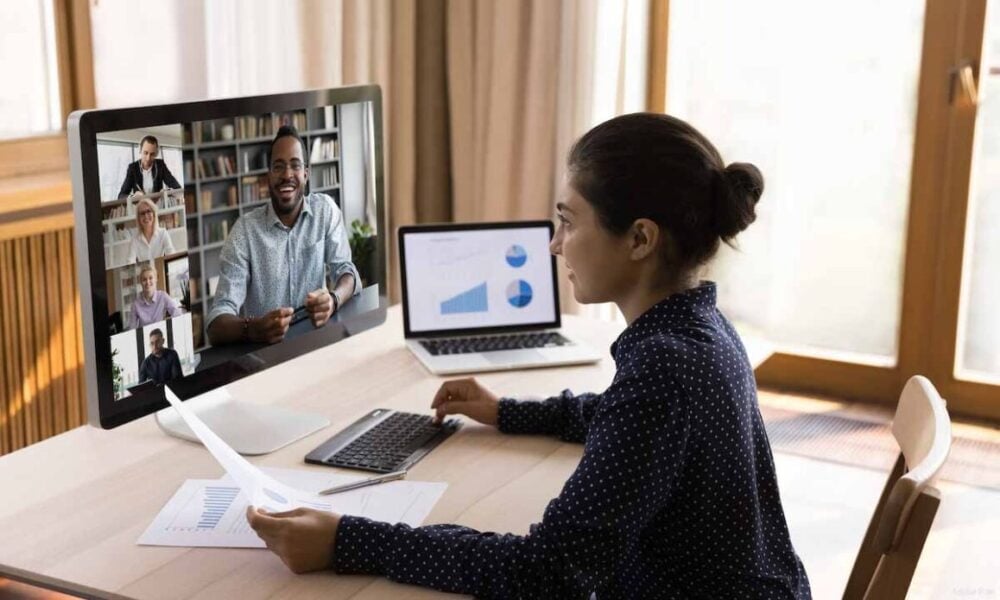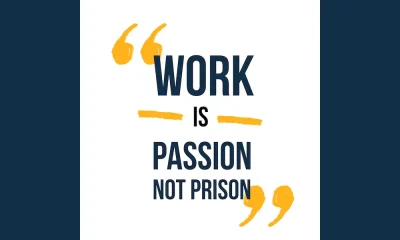Technology
5 Video Conferencing Security Questions, Answered

Video conferencing has pretty much become the norm during the COVID-19 era. Millions of Americans were put out of work, and others had to go home and work from the comfort of their living rooms.
We’ve seen video conferencing software of all kinds rise to the occasion and provide everyone with stable, high-quality platforms to say in touch with their loved ones and workplaces.
But what about security? Are video conferences secure? What if someone joins that you don’t want there? Today, we’ll go over give frequently-asked questions about video conferencing security so you can rest at ease knowing your call is secure.
1. Who Can Join?
With most video conferencing software, you need a specific link to be able to join a call. This secure link is generated once you schedule a call, and can only be accessed by the people you invite. It’s important to be certain of your attendee list before you send out your invitations so that anyone you didn’t want there doesn’t show up.
One of the biggest concerns for businesses is that someone will join the call who doesn’t belong there. This can jeopardize sensitive information, and, since some conferencing apps offer file sharing as well, could jeopardize files and documents sent through the software.
You’re the first line of defense in protecting your call from unwanted visitors. Keep the meeting private to only those who you need present. Encourage attendees not to give out the link to anyone without your permission.
2. Is My Call Private?
In general, yes—your call is completely private. However, you’re largely responsible for the privacy of your call. In the section above, we talked about keeping unwanted visitors out. Conferencing software has some great tools to help with this.
Some services provide a waiting room where callers wait until they’ve been verified. As the host, you also have the power to remove anyone you want from the call with the touch of a button.
Your worst enemy with video conferencing and remote meetings is the attendees. They can give outcall information on the accident or invite people who don’t belong.
If you want your calls to stay private, you’ll need to keep the information as private as possible. This could mean withholding conference links until just before the meeting begins.
3. Can I Use A Password?
Some conferencing services allow the use of a password to make calls more exclusive. So, the answer is yes, but it still depends on which conferencing platform you’re using. Check the features of your platform before hosting your first call. Does the platform allow password use?
The password you use should be complex and difficult to guess. Don’t use company information or anything that might relate to you.
A good password is longer than 11 characters and contains a combination of upper and lower case letters, numbers, and symbols. Be sure to only give out the password to people who absolutely need to be at your meeting.
4. Enforce A “Camera On” Policy
The scary thing about using web-based tools is that you truly don’t know who you’re talking to on the other end unless you can see their face. That’s why it’s so important to enforce a camera on policy for your video conferences.
You’ll want to identify everyone that’s in your call by their face. Anyone can hide behind the same username, but it’s nearly impossible to replicate a face. Plus also want to see your callers’ body language.
Body language is an important part of communication and something that’s generally lost in audio-only calls. That’s the advantage that video conferences have over their audio-only cousins. Enforce a camera on policy so you can verify identity, see your callers’ body language, and connect more by seeing their faces.
5. Are Video Conferences Really Secure?
So, are video conferences actually secure? The answer to the question lies with your efforts. How secure your call depends on how secure you’ve made it by making your guest list exclusive, using a camera on policy, and discouraging your attendees from sharing meeting information with others.
At the end of the day, you’re the one that’s responsible for the security and privacy of all of your conference calls. Modern conferencing platforms have taken every measure to ensure a secure call—the rest is up to you.
There’s always a chance that a call can be hacked, just like any other web-based platform, but by taking certain precautions, you minimize this risk. The password entry method is one of the best ways to deter snoopers or hackers from gaining access. Try to keep your login links as private as possible as well.
The Future Of Business Communication?
COVID-19 has shown us that even in the face of a deadly virus, we can still work, stay in touch, and keep things running. There’s a good chance that this pandemic has changed the way we communicate both in business and at home forever.
Now, more than ever, we need remote communication tools to keep us connected even in times of crisis. It’s a good time to start using these incredible tools but remember—you share the responsibility of making your video conferences secure and private.






